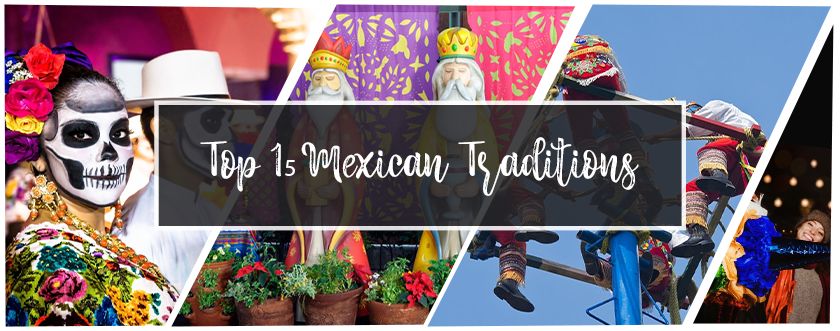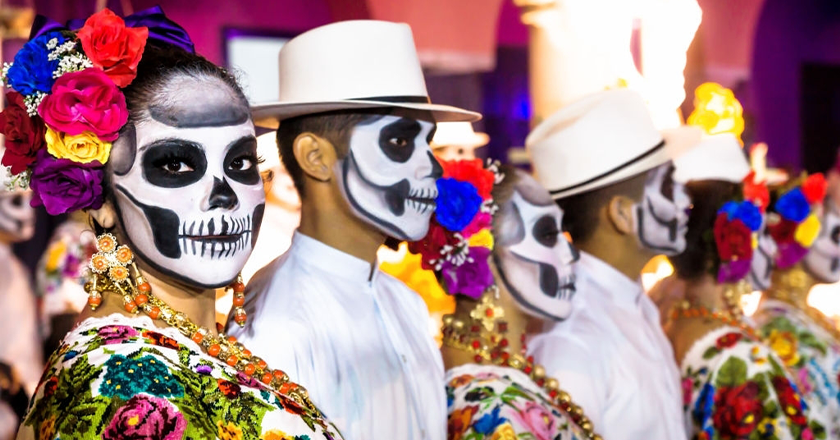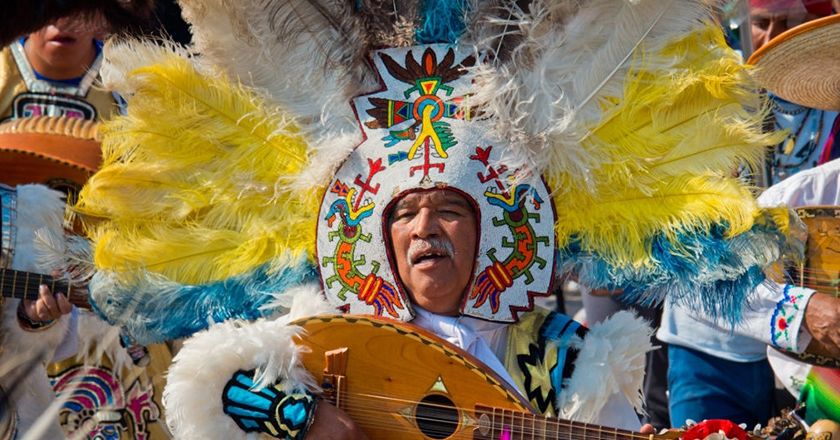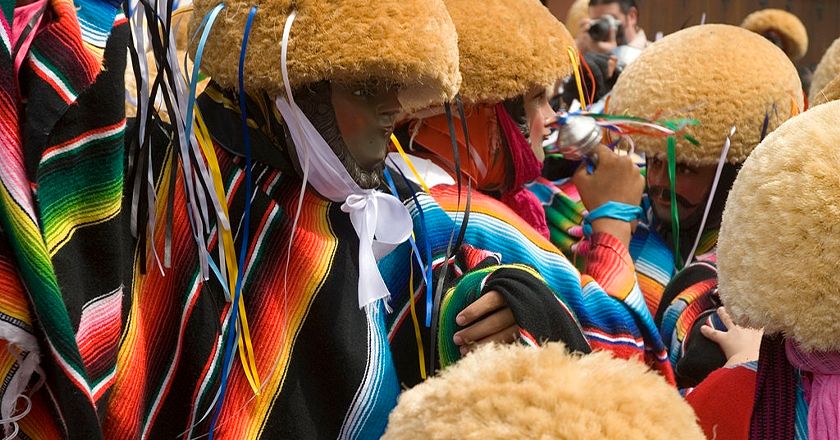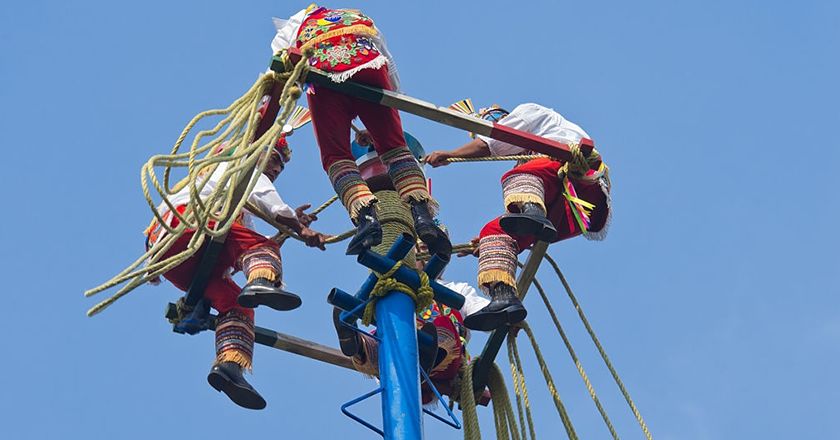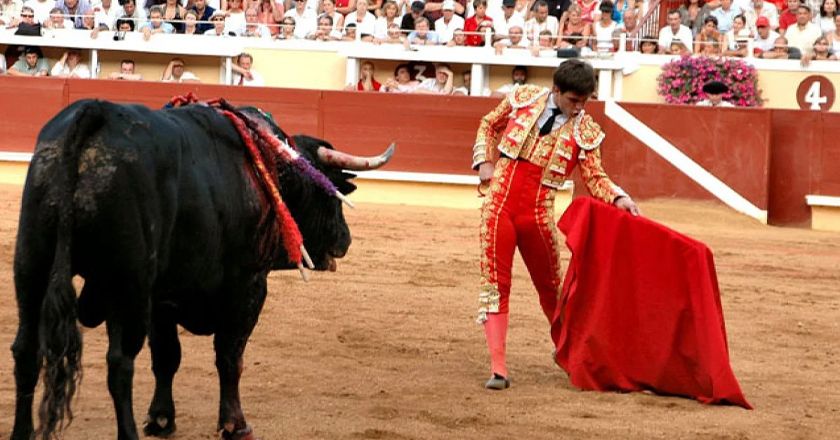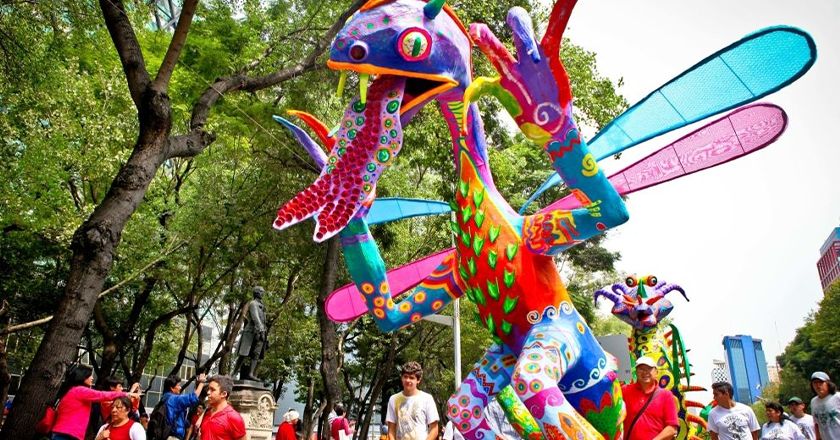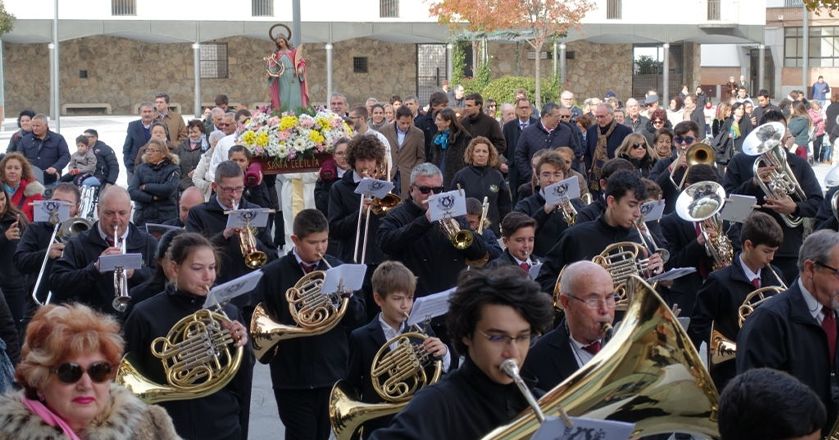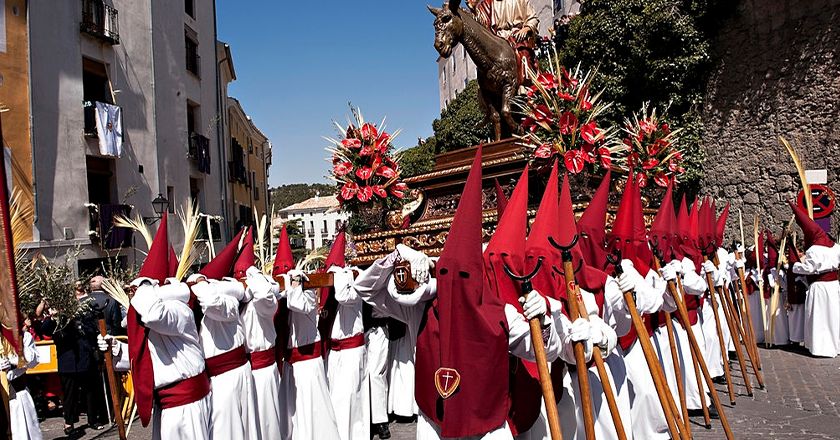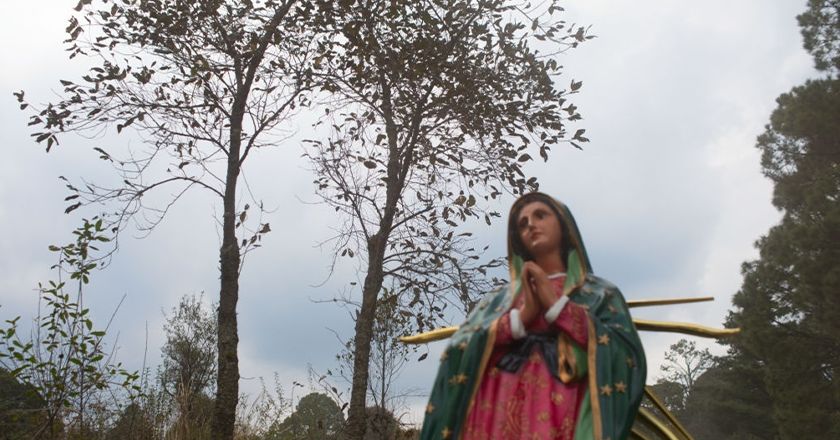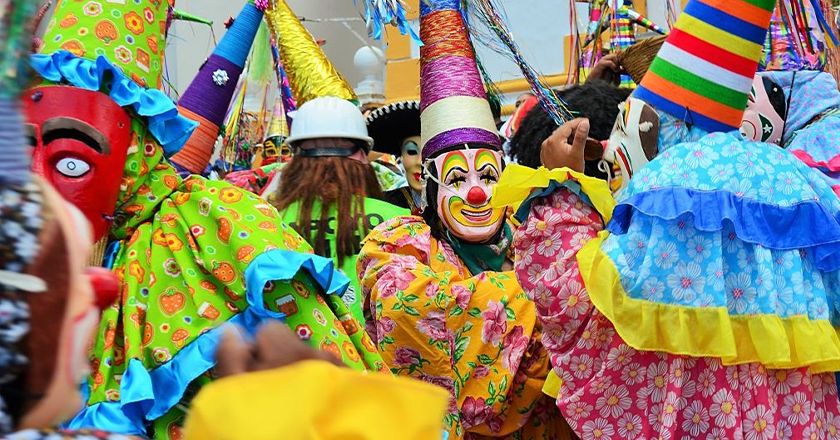Traditions differentiate one country from another. Most traditions come into existence when people from different areas come to live in the same region. They follow different rules and regulations, and when they mingle with local people, they form different cultures and traditions. People move to different places because of new opportunities in life. Therefore, traditions transform. Mexican traditions are not an exemption. But due to political instability and the wars with France and the USA, Mexican traditions struggled to show a consistent identity.
Mexico is the 12th most populous country in the world. According to the Central Intelligence Agency, many ethnic groups are residing in Mexico. The Amerindian Spanish group constitutes 62% of the population. 21% of the population is Amerindian and only 10% of the population is white.
These groups bring with them their ways of living Therefore when they interacted resulted in the formation of unique Mexican traditions. Moreover, the Spanish colonial presence in Mexico has also impacted various aspects of life. However, Mexican people struggle hard to preserve their traditions throughout history to distinguish their identity.
Let’s dive into the top 15 Mexican traditions.
Day of the Dead
One of the unique Mexican traditions that differentiate Mexican culture from others is the way they give respect to dead people. They celebrate this day with the belief that there is no difference between the spirit world and the real world. The departed souls come to the earth to eat, drink, dance, and listen to music with their loved ones.
On 1st and 2nd November, people celebrate this tradition. They decorate their homes and the streets of the city. In this tradition, the families of the deceased honor their dead people by cleaning their graves and putting their favorite foods on their graves.
Moreover, they also put flowers on the ofrendas built in their homes. Furthermore, they decorate them with candles, marigold flowers called cempasuchil, and food. Mexican people have been following this tradition for years.
La Guelaguetza in Oaxaca
La Guelaguetza in Oaxaca is an important Mexican tradition. People celebrate this tradition in Guelaguetza on the consecutive Mondays that come after July 16. They celebrate these holidays with cultural events, dances, feasts, and concerts by artists. The history of La Guelaguetza showed that it came into existence when Mexica-Aztec conquered Oaxaca. Moreover, at that time, Oaxacan worshipped the goddess of tender corn called Xilonen but at present, this tradition is linked to the goddess of corn called Centeotl.
The meaning of Guelaguetza is to share, give, and provide services to others. It is derived from the Zapotec word Guendalezaa which means offering gifts. When people get married, their relatives give them money or gifts. The host notes which relative has given how much money.
This exchange of gifts and money helps to keep the families united. La Guelaguetza takes place at the top of Fortin Hill so the spectators can have an amazing view of dances and music. Therefore, it is also called Lunes del Cerro, which means Mondays at the hill.
The Parachicos of Chiapas
The Parachicos is a Mexican tradition. The people of Mexico have been celebrating it for centuries. It takes place in the city of Chiapa de Corzo. This tradition is a mixture of old traditions and new traditions that people adopted in the colonial period. Mexico’s tradition depicts the foods, music, decorations, and costumes.T.
People enjoy this traditional festival from 8 January to 23 January each year. It is such an important Mexican tradition that UNESCO declared the dances of the Parachiocos, the intangible cultural heritage of Mexico. The history of this tradition shows that during the colonial period Maria de Angulo, the Richest woman’s son, got ill and was unable to walk so she came to Chiapa de Corzo.
She came across the herbalist there who told her to take her son to take a bath for nine days in a nearby spring. The woman did the same and her son got well. Therefore, Mexican people celebrate this tradition to remember that boy.
The Papantla Flyers
One of the traditional dances is Papantla Flyers. Every part of its dance has some meaning. It is an interesting Mexican Tradition. The history of this dance lies in the region between Veracruz and Puebla states in a Totonac culture zone. Papantla is a major place where this tradition is famous. It is a pre-Hispanic tradition.
People used this tradition to extend water in dry seasons. Therefore, a man falling from the sky depicts the rain from the sky which is essential for fertile soil. Initially, the ritual started by selecting and cutting the tree for flying. People use this act of flying for prayers and seeking forgiveness from the woods.
The most important part of this tradition is its trunk. However, they also require the wheel so that they can spin while coming down. People use stretchers to support the Papantla flyers. It’s an important tradition, and UNESCO added it to the list of the intangible cultural heritage of humanity in 2009.
San Marcos National Fair
The San Marcos National Fair is a traditional fair. People celebrate this fair in Aguascalientes. It is held every year for three to four weeks around 25 April. However, its dates vary. Initially, this fair was associated with Vendimia, which is the harvesting of grapes. Moreover, harvesting grapes and their production is mainly done in Aguascalientes.
At present this fair promotes livestock and other products. Bullfighting and cockfighting are linked with this fair. Therefore, tourists from all around the world came to show cockfighting and bullfighting. Around seven million people visit this fair every year. Therefore, hotels accommodate these visitors.
Some people give their homes for rent and go on vacations. You can witness Mexico’s culture, sports, and business at this fair. The Mexican government has allocated 90 hectares of land for this marvelous fair. This fair is held in the main hub. Therefore, many companies sponsored it.
Parade of Alebrijes
The parade of Alebrijes is very popular among the people. People have been celebrating this tradition since 2007. Museums of popular art and different institutions organize this event. Alebrijes depicts Mexican culture. Alebrijes are chimera-like creatures. An artist named Pedro Linares.
made these creatures and got famous because when he was ill, he brought his fantasy to reality by creating carnival masks and other paper works. This tradition started in the Zocalo of the city and people liked the mache figures that are in fascinating colors.
The parade resembles a carnival. Moreover, clowns, costumed people, and many more festivities are included in it. At the end of the parade, the fascinating figures are shown at Paseo de la Reforma.
After that, they are evaluated and prizes are awarded to the artists. Moreover, this competition also comprises two literary competitions, musical competition, and a play story about alebrijes.
Celebration of Saint Cecilia
Mexican music is incomplete without discussing Saint Cecilia. She was a great musician, hymn, and poet. Moreover, she was the most popular Roman martyr and one of the seven women that are narrated in the Canon of the Mass. On the 22nd of November every year, the day is celebrated to honor her.
In every town, musicians sing mananitas, arrange concerts and show their love for music. It is an amazing tradition to acknowledge Mexican music. People celebrate one of the main events of this tradition at Plaza Garibaldi in Mexico. Here different musicians get together to perform a concert.
Semanta Santa
Semanta Santa is the second most celebrated holiday in Mexico after Easter. People spend weeks making preparations for this tradition. The week starts with Palm Sunday having large Catholic processions. People make crosses from woven palm leaves and then they burn them to make symbols on the foreheads of the parishioners.
Approximately, 90% of Mexico is Catholic. Therefore, they take vacations this week and often extend them till the holidays of Easter. People decorate the Podiums in churches with flowers.
Moreover, people use crosses and other things to decorate the streets. Although this celebration goes for a week the days like Maunday, Thursday, Good Friday, Holy Saturday, and Easter Sunday are of great importance.
Day of the Virgin of Guadalupe
The day of the Virgin of Guadalupe is a very important Mexican tradition. It is based to celebrate Catholic belief that a man met the Virgin Mary in Mexico City on December 9 and 12 in 1531. This day is a public holiday in Mexico. The celebrations of this event start on December 12th because according to them, it was the last spirit of the Virgin to San Juan Diego.
The celebration starts with lyrics and other attributes at 6:45 p.m. and at noon, they start singing traditional mananitas for the Virgin of Guadalupe. On this day, lots of people go to churches for prayers and many people go to perform pilgrimage to the Basilica of Guadalupe.
The Posadas
The posadas are one of the most fascinating traditions in Mexico. It takes place from 16th to 24th December. During this period, 9 prayers are made and each prayer is different. For instance, these prayers are regarding strength, detachment, charity, justice, joy, purity, generosity, humility, and trust.
In this tradition, people narrate the Bible story of Mary and Joseph’s journey to Bethlehem. This tradition also includes different kinds of Mexican Christmas Carols, preparing special songs, and breaking pinatas. Moreover, in this tradition, people cover themselves and break the pinata. It is baked clay and its display is very colorful.
Epiphany or Three Wise Men’s Day
Epiphany, also known as Three Wise Men’s Day (also the Día de los Reyes Magos in Spanish) is a traditional religious holiday. People celebrate it on 6th January. The holiday marks the end of the Christmas season and the beginning of the new year.
It commemorates the arrival of three men in Bethlehem. These men came to worship the baby, Jesus. According to the Bible, the Wise Men brought gifts of gold, frankincense, and myrrh to the newborn king. The other name of it is Twelfth Day as it comes after the 12 days of Christmas. In Mexico, people celebrate this day by exchanging gifts and preparing a special dish called Rosca de Reyes.
In this dish, people hide one or two dolls. These dolls represent baby Jesus. The tradition is that if anyone finds the dolls in this dish, they are considered blessed and have to represent the baby Jesus in the church and invite their relatives to eat tamales.
In many parts of Mexico, there are parades and processions on Epiphany, with people dressed up as the Wise Men and carrying gifts for children. The Three Wise Men are a beloved part of Mexican folklore, with each of them representing different values and qualities: Melchior, the European king, symbolizes gold and generosity; Gaspar, the Middle Eastern king, represents frankincense and faith; and Balthazar, the African king, stands for myrrh and charity.
New Year
People of Mexico celebrate the new year with much zeal and enthusiasm. They throw parties on new year’s eve and arrange to get together. The most popular new year Mexican tradition is eating 12 grapes and making 12 wishes. According to them, 12 grapes represent 12 months of the year.
They believe that if you eat 12 grapes in 60 seconds then your 12 wishes will come true in the new year and you will remain lucky throughout the year. Some people are also of the view that if you concentrate on 12 new resolutions, then you will easily accomplish them.
Quinceañera
In Mexico, a girl that gets 15th years old is called quinceanera. It is a Spanish word; quince means fifteen and anos means years. This word represents a girl who turns 15 years old and it reflects their transition to maturity. This tradition of Mexico has a history of Aztec culture.
According to them, when a girl gets 15, she can fulfill all the adultery tasks and one of them is to become a parent. This tradition is celebrated in the Church. The girl wears a beautiful gown of her favorite color and carries a bunch of matching flowers. Other festivities include lavish feasts and dances.
The Inns
The Mexican children from 16th December till Christmas eve visit different inns. This tradition commemorates the voyage of Joseph and Mary which they made from Nazareth to Bethlehem. According to their belief, they were looking for a place where Mary could give birth to baby Jesus.
When they were unable to find the right place then they took shelter in a stable where Jesus was born. In this tradition, children visit various inns with candles in their hands to demonstrate Mary and Joseph.
They also visit family and friends and sing songs about Jesus and his parents. They continue this process until Inn owners welcome them.
Carnival of Veracruz
No doubt, Mexican carnivals are unique and you will not find such carnivals in the entire world. Veracruz is a city that hosts this carnival. Translators translate it as the world’s most cheerful Carnival. It is one of the oldest traditions of the United Mexican States and its history is from eighteen centuries.
Approximately one million people come to Mexico to attend this carnival. During the Carnival season, the city is shut down and thousands of people from around the country get together to celebrate the festival.
The city is very crowded and the people who don’t get reservations in hotels stay in their cars. During the festival, people can witness the colorful side of Mexican traditions.
Wrapping Up
Mexico is a country with amazing and enriched traditions. Foreign people witness these traditions with pleasure. To understand the traditions and culture better, you need to know the language of that country. If you are unaware of the languages that people speak in Mexico then don’t worry, CCJK is here for you. They provide you with seamless translation services at a fast turnaround time and economical rates. For more details, Contact us.
